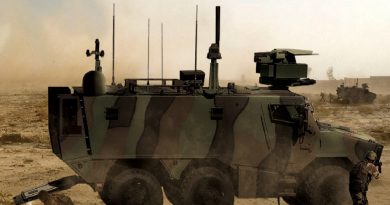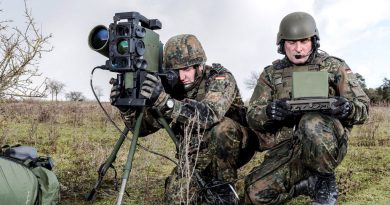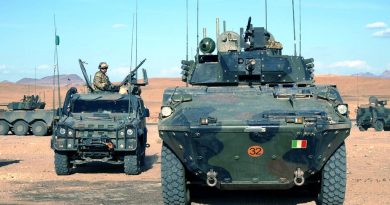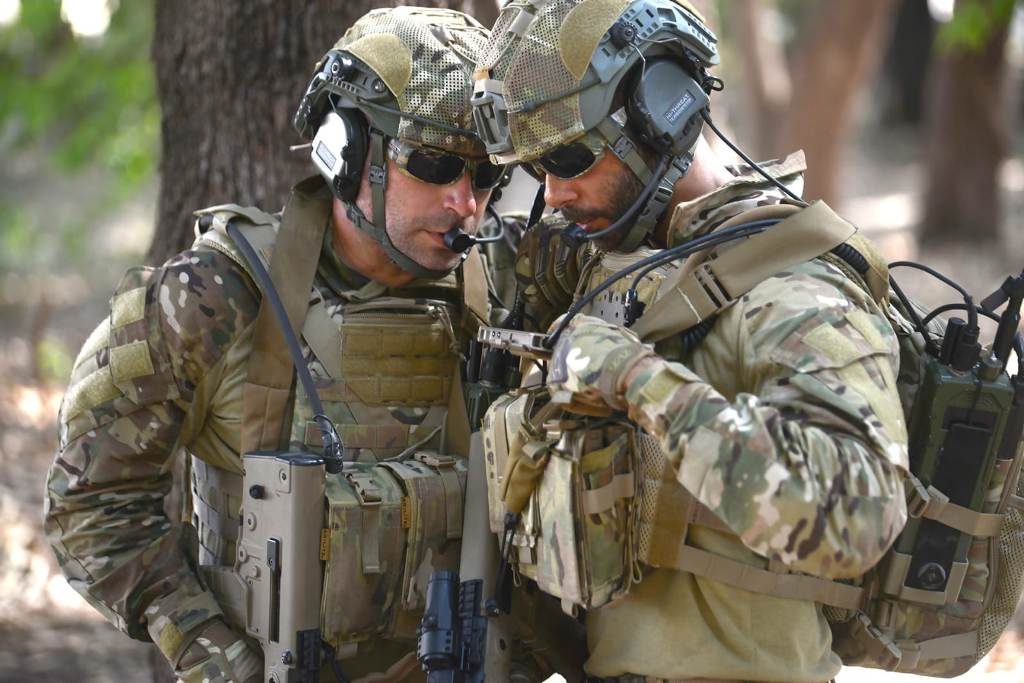
Rafael Innovation Program Center: looking into the future of land warfare
Closing the sensor-to-shooter loop in the shortest possible time while ensuring maximum safety for his own troops is the dream of all commanders. Rafael Advanced Defense Systems of Israel aimed at exhibiting in Paris its latest systems aimed at providing a quantum jump in land formations effectiveness. “Recent times saw dramatic changes in the core of warfare, with the advent of asymmetric warfare scenarios where our armies are confronted with an evasive enemy who evolves into a complex scenario, among civil population,” Shmulik Olanski, the head of the company Innovation Program Center tells EDR On-Line. A former IDF officer, he ended his career in 2017 as chief of the Armoured Corps, and since then he is responsible of the team that develops advanced technological programmes, and in particular autonomous systems incorporating artificial intelligence (AI) capabilities.
The military digital revolution started over 20 years ago, however according to Shmulik Olanski what we call now “digital” is much more than what we had a few decades ago: “The main evolution is due to the nets, which allow us sharing information and data, as well as to the capacity to elaborate those data in order to increase their operational effectiveness.” While in the past a digitised map was basically a paper map transformed into pixels, nowadays each one of those pixels carries a whole amount of data, which makes things pretty different. “As in ‘smart houses’ all systems being run by computers allows to handle them in an intelligent way, in the military the fact that we now have all digitised systems, such as i.e. our Spike missile, allows us to synchronise their use in order to obtain a result which is more than the sum of the effects of the single system.”
Years ago Rafael started working on the Match Guide technology, developed for air-to-ground missiles applications, where the picture seen by the missile sensor matches the data provided by the digital map, allowing precision navigation and targeting. “This evolved in the targeting system we are proposing now, known as Fire Weaver, where we match the vision of the operator with the 3-D model that provides 360° overlapping between the view and the area,” Olanski says, explaining that “When I aim at a window in the middle of a town, from my angle and from my height, everybody that has the same system that I have will see the same window, no matter where he is.” This helps in sharing targets without the risk of major errors that might delay the closure of the sensor-to-shooter loop or bring to collateral damage or friendly fire incidents. Another major advantage is that being based on pixels, the system is in fact GPS-independent. As for the generation of the 3-D model, this can be obtained using different types of systems, some of them available for integration on drones, the tactical unit being able to produce it “in a matter of hours” according to Rafael. “There are various 3-D systems capable to provide such models, and we noticed that many of our potential customers have a requirement for such systems; we work with partner companies on that specific issue, however our system is 3-D model agnostic, the higher the model resolution, the higher the accuracy,” Shmulik Olanski says.
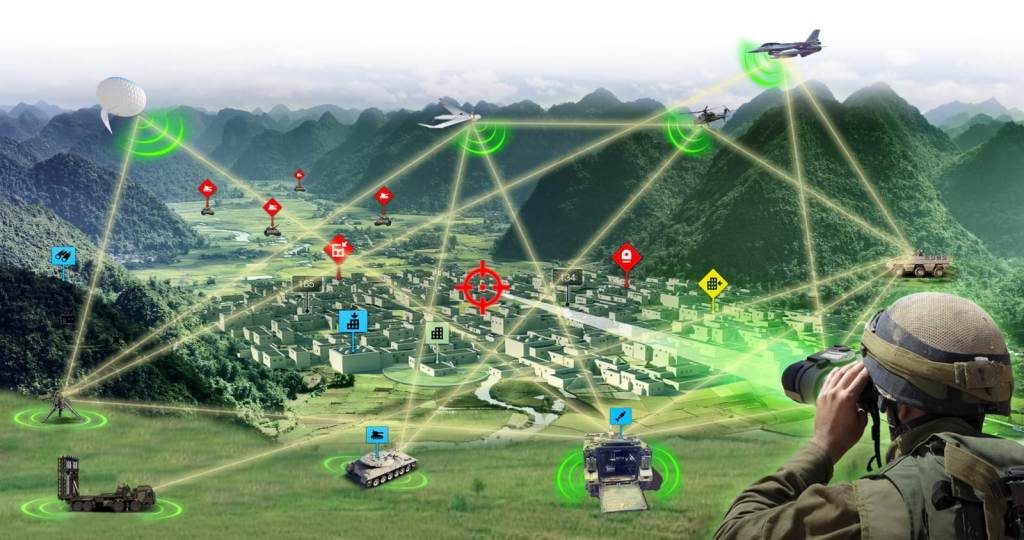
Unveiled in mid-2018, the Fire Weaver networked fire management system would have been one of the stars at Eurosatory. “The Fire Weaver brings everything on one net allowing the sharing of target location, suspicious areas, enemy and friendly positions, however compared to nowadays Battle Management Systems (BMS) it does much more, as the Fire Weaver Core, that is the central computer where data are managed, is based on technologies such as Artificial Intelligence, Cognitive Dissemination, and Real Time Fire Selection, which allow to elaborate a huge amount of data in a very short time, something the human brain would never be capable to do,” the head of Rafael’s Innovation Program Center explains. He also underlines how the decision-making process even at battalion or company level is nowadays much more demanding compared to 20 years ago, as commanding officers must deal with much more information gathered from many more systems, sensors and shooters, to be put to fruition in a much more complex environment. Rafael’s aim was to keep all complexities “behind the scenes” while providing the soldiers on the field with a human-logic based human-machine interface.
“The system was designed from inception as a fully open architecture, open not only in the technical sense, allowing to easily plug in new sensors and effectors, but, even more important, ‘intellectually open’, and by this I mean that it allows to insert Rules of Engagement (RoEs), Tactics, Techniques and Procedures (TTPs), doctrinal elements, safety regulations and so on, all necessary for elaborating the data to provide the decision-maker on the field with optimised solutions in the shortest possible time,” Shmulik Olanski says. Such an open architecture that goes well beyond the pure technicalities allows the Rafael system to be proposed to countries which RoEs, TTPs and doctrines differ considerably from those adopted by the Israeli Defence Forces, with which the Fire Weaver was developed, the IDF having been the first to adopt the Rafael’s system as it was announced in early February 2020.
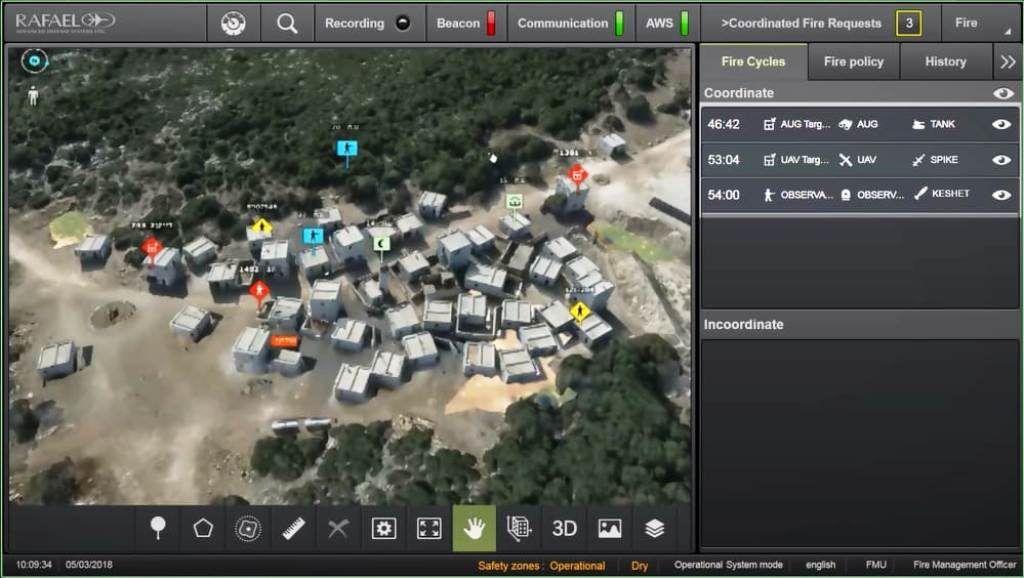
Artificial Intelligence is key in the system self-learning process, integrating all doctrinal elements as well as new sensors and effectors. Aforementioned technologies also ensure that only the people involved in a certain action receive the relevant information, with two beneficial effects: on one hand it avoids an excess of information, most of them unnecessary thus having a detrimental effect on the speed of action, and on the other it keeps at a minimum the use of the communications systems bandwidth, which has often become a stovepipe in past BMS. Of course those information can be released in different forms, among which Augmented Reality adding standardised icons onto commanders and soldiers viewing systems.
That said, Rafael developed the BNET family of broadband IP software defined radios, which are available in four versions, airborne, hand held, manpack and vehicular. “Their bandwidth allows to move huge amounts of data, and just as an example a Hand Held radio weighing 1.2 kg can receive up to six light video streamings at the same time,” Olanski points out. “Fire Weaver matched with BNET marks a quantum jump in the tactical commander’s capability, considerably increasing accuracy, a key element in the targeting process, as all actors involved in the action can see and recognise the target, each one from his own position and angle,” he adds. Being defined as a “Networked Sensor-To-Shooter System” it includes the Fire Management Terminal, that enables the commander to set the levels of autonomous activity, add safety zones, timelines for operational windows, and so on, giving him the final word before the attack is launched.
The system autonomously collects and gathers intelligence and operational data from all kind of sources, processes and analyzes it, and makes it common visual language providing “one operational language for different units”. It gives in real-time live updated data according to enemy location, blue forces positions and points of interest, which are marked and shared immediately. Furthermore, Fire Weaver provides each of its endpoints with the relevant operational information, identifies the permitted or prohibited attack zone, calculates safety distances from blue forces and considers and examines all safety aspects in real time. Therefore, Fire Weaver prevents friendly fire incidents and dramatically reduces civilians casualties, Rafael says.
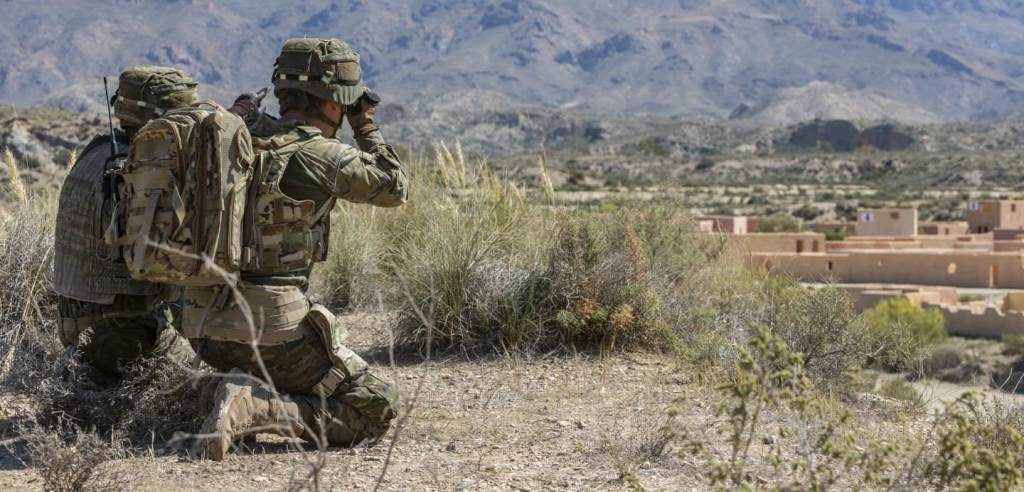
“In August 2018 we did an experiment, deploying an IDF battalion equipped with 17 Fire Weaver end points in a force-on-force exercise,” Olanski tells, “the aim being to retake a village from an opposing force, the same exercise having been played by three battalions equipped with the standard C4I system.” The difference was evident, the Fire Weaver-equipped battalion completing the assigned missions in one third of the time and closing three times as many sensor-to-shooter loops. But the best evaluation came from the two commanders reports. “The Blue Force commander stated that he felt more comfortable than usual with the reports coming in from his subordinates, and he sensed they were really on top of the tactical situation and were exploiting at their best resources provided at battalion and brigade level.” As for the OPFOR commander, “he told us that with the exercises played against the three battalions equipped with standard systems he just had to wait for them to enter the village, and then he won the fight exploiting his much better knowledge of the battlefield, while with the ‘Fire Weaver battalion’ when he tried to call up his forces for attacking the enemy, he figured out that he had nearly no forces left.”
Fire Weaver is currently provided for tactical level use. “However we are now taking it one notch up, exploiting our communications systems that allow us to handle huge amount of data,” Olanski explains, “so we want to add a much greater variety of weapon systems integrating also air and naval assets and making it a joint asset.” This will probably start again in Israel, although the Haifa-based company is looking very much at the international market. In late 2019 Germany announced that Rafael, together with French company Atos, had been selected to carry out a programme leading to the so-called “glass battlefield”, exploiting UAVs and armoured vehicles fitted with appropriate systems to create a 3D picture of mobile operations in real-time.
Rafael’s Innovation Program Center is also involved in the development of new technologies and in testing new solutions that will be used in the IDF future armoured combat vehicles, and in particular the indirect viewing system allowing the driver and the crew to operate with hatch closed without using episcopes, and the two-man crew concept. Israel aims at reducing the armoured vehicles’ cost, the current four-man crew being extremely expensive in terms of weight, engine power and fuel consumption. The protection of tank crews has always been a major issue in Israel, hence the Merkava architecture with the engine in front, that adds to protection. And protecting only two crew members hosted in a much smaller capsule inside the chassis makes a dramatic change in the vehicle’s cost. “Once it was decided that a two-man tank with a remotely controlled turret might be the right solution, the Israeli MoD asked the industry to demonstrate the feasibility of this concept, and we at Rafael’s Innovation Program Center accepted the challenge,” Shmulik Olanski says, leveraging his decennial experience in the armoured warfighting business.
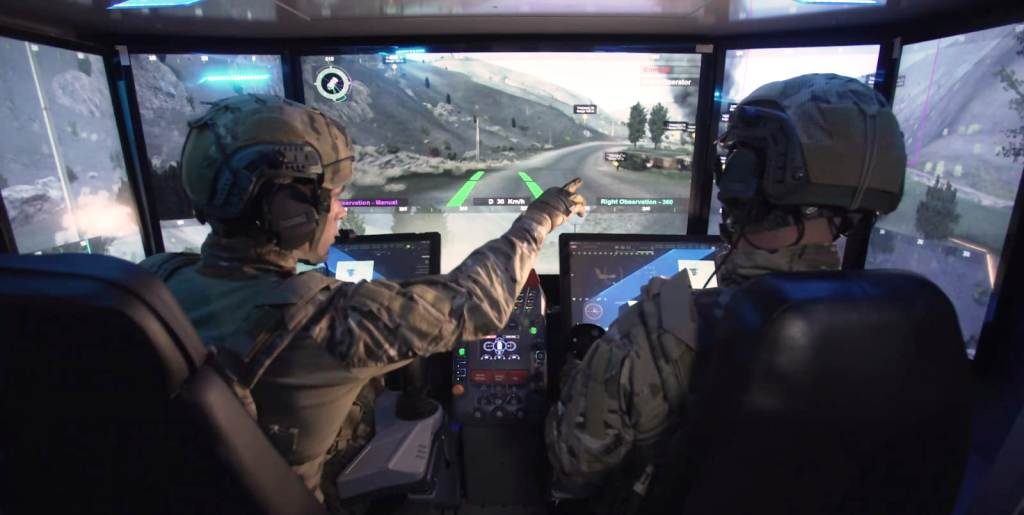
To provide full situational awareness Rafael developed the so-called Transparent Cockpit, which was demonstrated in August 2019 on board anM113 armoured personnel carrier deployed at the Elyakim Army Base. “This is based on a human logic screen allowing a 360° view, and the survey from the testing states that the view is absolutely similar to a direct view through a transparent glass,” Olanski states adding that “the system has also the advantage to allow the injection of augmented reality in the form of symbols and graphic elements, while the touch screen can be exploited as a command and control item when in operation.” Reducing the crew to only two members might bring to a work overload : “this is not true, as we have on board a third element, that we usually refer to as the AI Crewmember, as artificial intelligence is key in carrying out all those tasks that can be done by a computer with auto-learning capabilities, leaving to the human crew only ethical decisions, that is shooting or not against a certain target, and higher level tactical decisions,” the former tank formations commander says. Among AI-supported functions we find the route choice, based on available data on terrain as well as on enemy known positions, avoiding being in his line of sight, obstacle avoidance, decisions on alternative routes, and enemy search, also based on available intelligence, sighting once an enemy has been acquired, and automatic target recognition. The computer is able to cope with all of these, taking into account many more parameters and elaborating them at a much higher seed compared to the human being, leaving to the actual crewmembers only the decision if shooting or not. “If the decision to shoot is taken, the system’s AI algorithm will decide which effector should engage, main gun, machine gun, missile, or if another system within the networked group, i.e. another combat vehicle or a mortar, should be called into action to optimise the engagement.” The CONOPS are thus considering a 2+1 crew solution, where the one is the AI-based virtual crewmember who acts both as driver and gunner, while the IDF is solving the sleep/stag problem not considering it anymore within the single tank but rather within the formation. “Our technology can be considered ready, and as it is mostly software-based it can be inserted into a wide variety of vehicles, so I do not consider it something of the future but rather a capacity which is available now, and we are proposing it to all major OEMs involved in vehicles design and production for their next generation armoured platforms,” Shmulik Olanski concludes.
Photos courtesy Rafael

